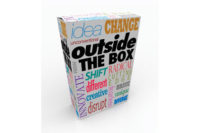When Ray Kroc stopped selling Dixie cups at the age of 52 and opened the first McDonald’s hamburger joint in Des Plaines, Illinois, he realized something that few others knew then or even grasp now. His secret: the burger doesn’t make the burger joint. In sales, there are intangibles more important than the product. In Ray’s case, it’s not about the burger.
So what does this have to do with safety?
Everything actually. We can learn some very important lessons from the best-selling mediocre burger ever.
Success is not about having the best burger.
In safety, the burger is the safety model or process. Safety professionals invest so much time studying safety models and systems. Once learned, great investments are made to sell and justify the “right” model to senior management. When the model is finally in place and we come up short in terms of safety goals, the automatic tendency is to go back and scrutinize the model.
What the Golden Arches teach is that almost any burger (safety model) will do as long as it is executed at a high level. When goals are not met, it’s much easier to try to build a better burger (safety model). It is much harder to execute a business plan (or safety model) well enough to sell a billion mediocre ones.
Be consistently consistent.
The secret Ray Kroc so masterfully delivered wasn’t food, but a consistent product over time. McDonald’s is so consistent that hamburgers today are the exact same quality and size as the first hamburger served six decades ago. Consistency builds trust.
One of the major issues with safety programs is lack of trust. And it’s fostered by an inconsistent safety message. We mix messages between safety, production, budgets and quotas. Operations might “get it,” but then purchasing buys sub-par tools because someone was able to save a few dollars. If we want trust in safety, it’s only achieved when the entire culture is consistently consistent…over time.
Burger-flippers are the best innovators.
Mark Towers (www.speakoutseminars.com) is a motivational speaker and author. In the mid-’60s, he was a young high school teacher in Iowa. In a short time he was a new father to two sons. In order to make ends meet he sought a second job, with none other than McDonald’s.
Much to his dismay on his first night of work, one of his underachieving students was his supervisor. After a long evening of cleaning and cooking, as Mark was getting ready to go home, his student/supervisor asked him, “What could we do to make things work better?”
Mark responded, “Why are you asking me, tonight is my first night?” To which the student responded, “We ask everyone that works here…we want to do it better tomorrow than we did today.”
McDonald’s asks, listens, and takes action on the suggestions of its employees. The Big Mac sandwich was the brain-child of Jim Delligatti, a franchisee.
How well do we listen to our people about hazards, exposures and possible solutions? When was the last time we really wanted to “do it better tomorrow”?
Teach happy skills instead of happy meals; teach the culture over skills.
McDonald’s understands that culture, not product, sells. To that end, it teaches the skills of culture over the skills of flipping burgers. That’s how, despite tremendous turnover, a young work force and extremely diverse restaurant locations, McDonald’s can remain consistent to its values and product. In fact, McDonald’s spends more than a billion dollars each year on training.
In contrast, most industries place a high premium on skills. We train and test for skills. We hire technical knowledge and promote the same. We manage systems instead of people. We think an organization is the hardware, machines, equipment and material, not the people that run and maintain these systems.
Today, teaching safety culture is left to co-workers, informal leaders and supervisors who possess technical knowledge but often lack the people skill set and understanding of culture. Leaving this to chance doesn’t make for a “happy meal” when it comes to worker safety. (For more on this subject, seeDr. John Kello’s culture column this month–ISHN, October 2007, page 28.)
McDonald’s is now introducing a “new look.” More than 3,000 restaurants across the United States will be renovated to look and feel more like a Starbucks Coffee Shop. As McDonald’s moves to the next phase of its organizational life, we can move to ours. And we can continue to learn a little safety from the best-selling mediocre burger joint ever.
Culture: Where's the beef?
